Business Ethics - Session 1
1/20
There's no tags or description
Looks like no tags are added yet.
Name | Mastery | Learn | Test | Matching | Spaced |
|---|
No study sessions yet.
21 Terms
What is ethics?
Ethics is the study of what individuals, groups, organizations and governments ought to do, as opposed to what they actually do. It is applying our value structures to the decisions we make about the decisions we make.
Ethics concerns the moral behavior of individuals based on an established and expressed standard of the group, which is in and of itself a collection of individual values.
What is business ethics?
Business ethics applies a value structure to how businesses should be run.
Business ethics is about…
How our ethical values lead into ethical commitments and corporate responsibility (responsibilities towards whom, ways of working, relationships with stakeholders). —> governance, core business strategy. All this leads into business behavior (how we do business)
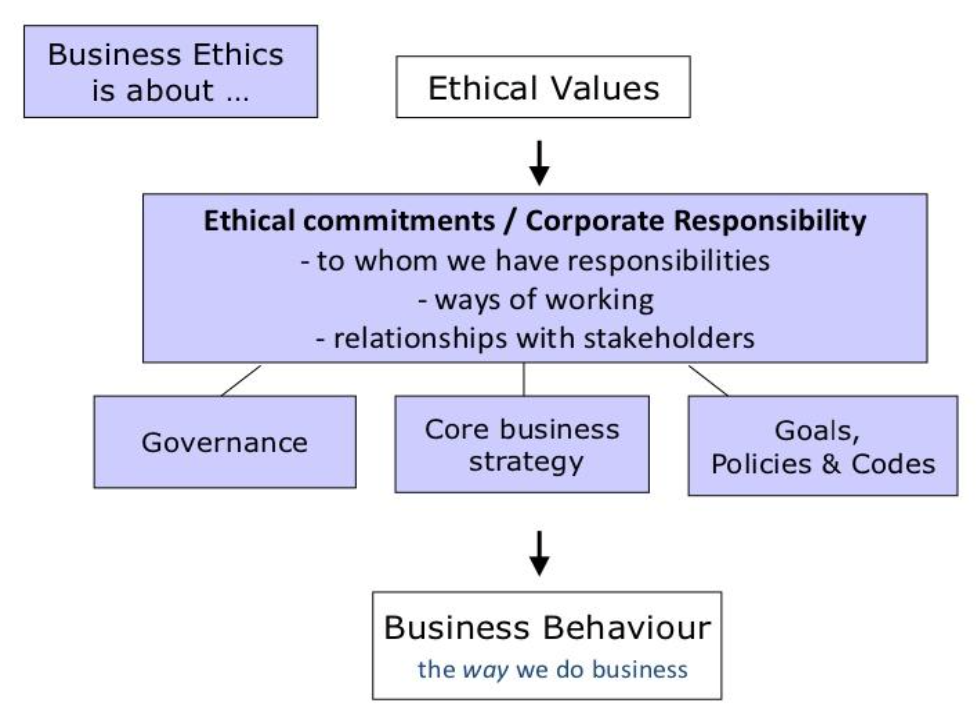
3 levels of ethical decisions
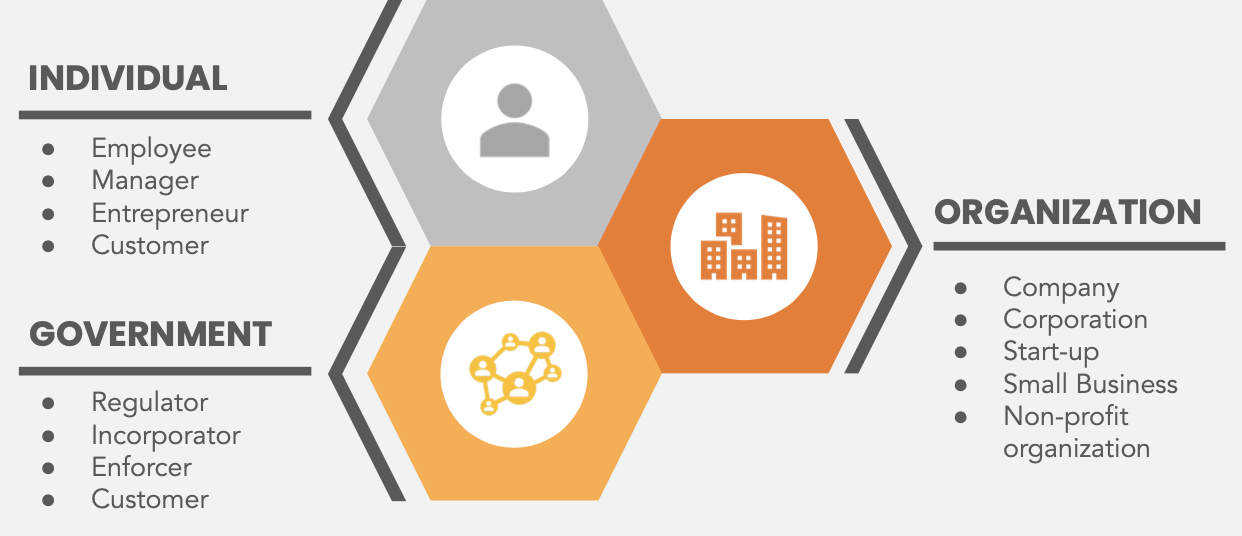
3 scales of business ethics
Micro= Groups, individuals
Meso= Institutions, organizations (Working standards and conditions, workplace diversity and opportunity, outsourcing, human rights
Macro= Global Issues (Climate change, public health, freedom of expression, global justice, immigration, terrorism, war, religious freedom, human rights, democratic values, AI)
5 theories of moral/ethical reasoning
Universalism ‘Do the right thing’= Does this decision respect others as equal beings with equal dignity? Which option would we want to be done upon ourselves?
Utilitarianism (Cost/Benefit Analysis)= Which option will produce the most good or do the least harm for the greatest number of people?
Rights-based= Which option best respects the rights of all those who have a stake?
Fairness and justice= Which option treats people equally or proportionally?
Character and virtue= Which option leads me to act as the person I want to be?
Culture of integrity involves=
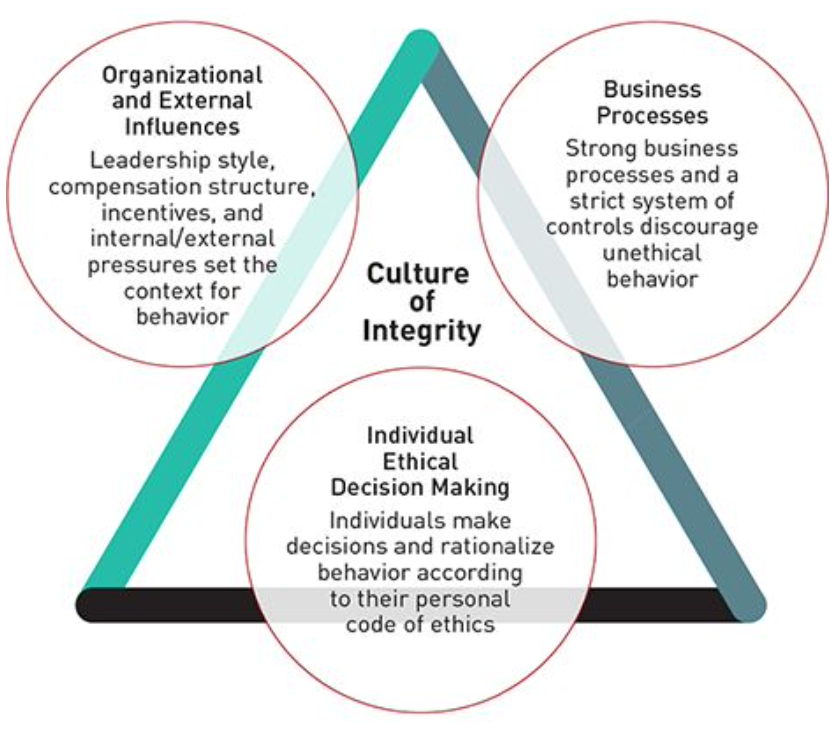
Link between ethics, compliance and risk
Proactive vs. reactive ethics
Compliance (reactive)= the act or process of complying to a desire, demand or official requirements. Disposition to yield to others —> objective, external, singular
Proactive= a set of moral principles governing an individual or a group, a guiding philosophy
What is an ethical dilemma?
Factors that affect ethical/unethical behavior
Ethical dilemma —> stage of moral development —> individual characteristics, issue intensity, structural variables, organizational culture —> ethical/unethical behavior
Determinents of issue intensity
Consensus of wrong= how much agreement is there that this action is wrong?
Probability of harm= how likely is it that this action will cause harm?
immediacy of consequences= will harm be felt immediately?
Proximity to victim= how close are the potential victims?
Concentration of effect= how concentrated is the effect of the action on the victims?
Greatness of harm= how many people will be harmed?
Framework for ethical decision making (IMPORTANT)
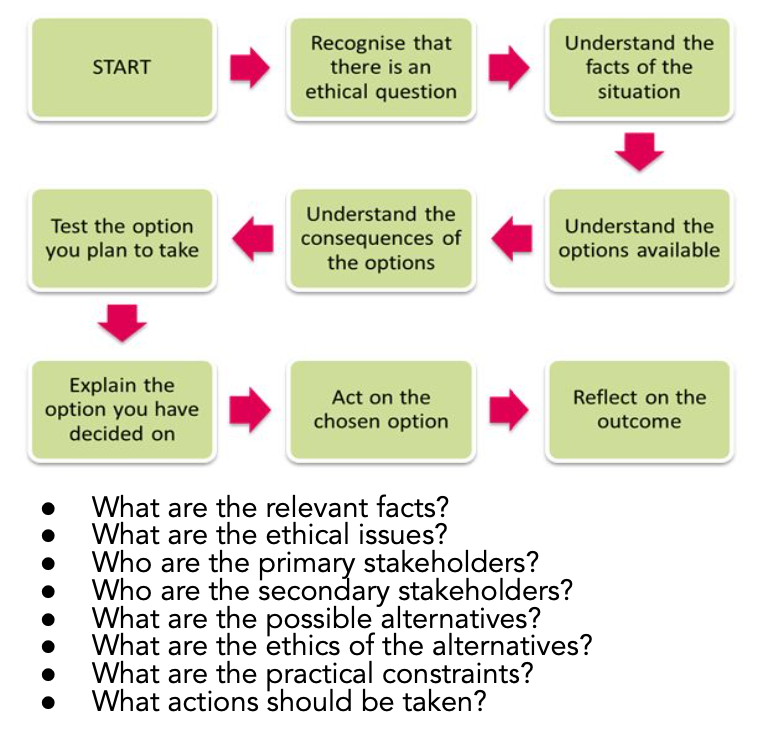
Four steps of ethical decision-making
AWARENESS of an ethical problem
Ability to REASON about ethical issues
Having the MOTIVATION to act ethically
Having the PERSISTENCE (or courage) to implement the ethical action in the face of inevitable obstacles
Current business ethics issues
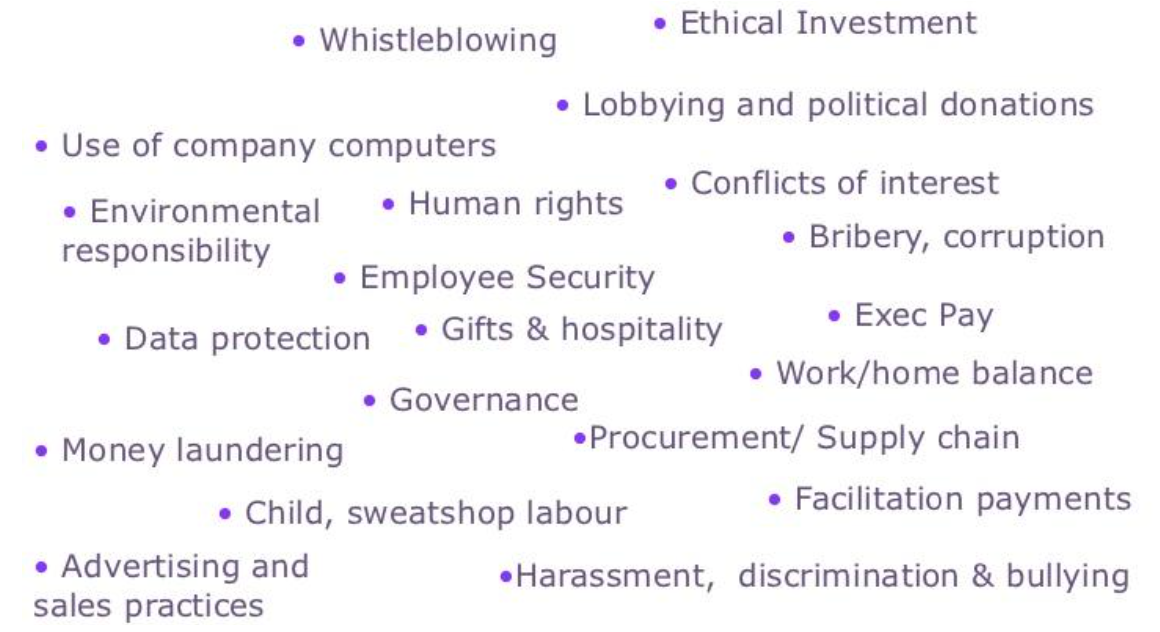
Shareholder - managerial model
The shareholder-managerial model positions shareholders as the most important priority for managers in their decision-making.
The mindset has dealt with the increasing complexity of the business world by focusing more intensely on “shareholders” \and “creating value for shareholders.”
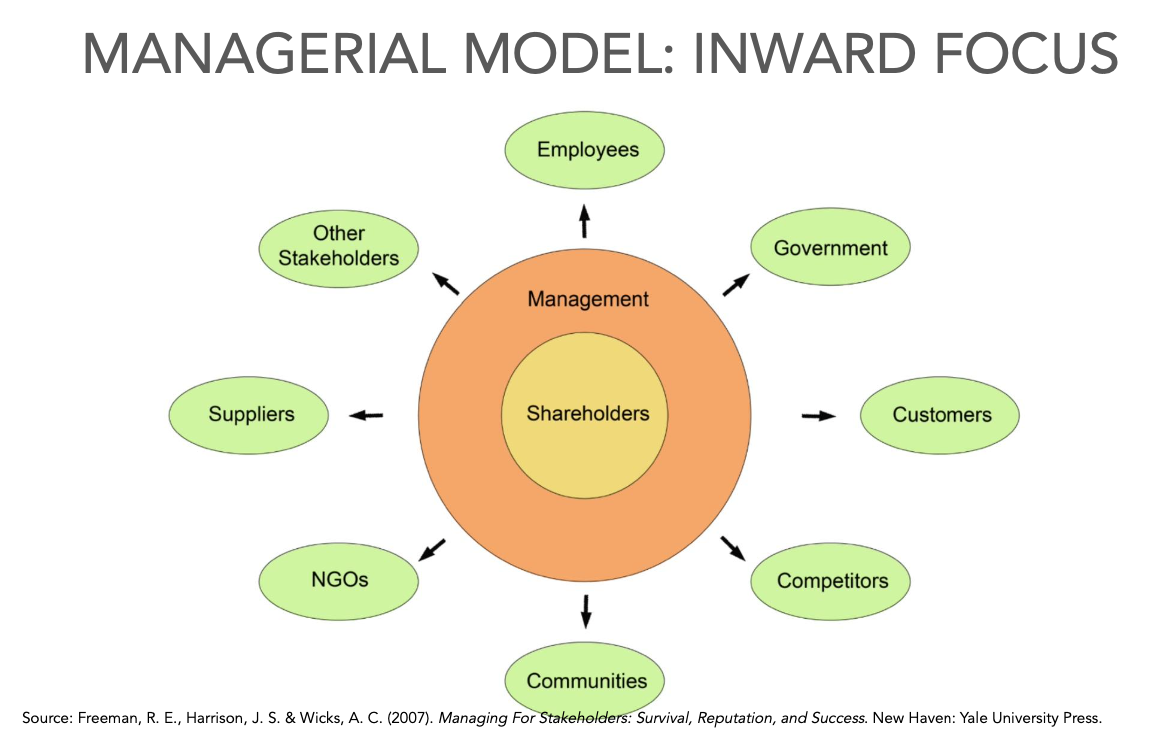
Separation fallacy
The separation fallacy is the mistaken belief that business decisions and ethical decisions can be cleanly separated—as if one can talk about business without ethics, or ethics without business.
Stakeholder model
The Stakeholder Model demonstrates how business is embedded in a complex set of social and economic networks. Business affects and is affected by individuals, organizations, and communities, therefore it has responsibilities to all those stakeholders. Shareholders are also stakeholders, and no more important than other stakeholders.
Profitability is but one element of a more complex economic model – one that includes ethical decision-making as a vital component of strategy.
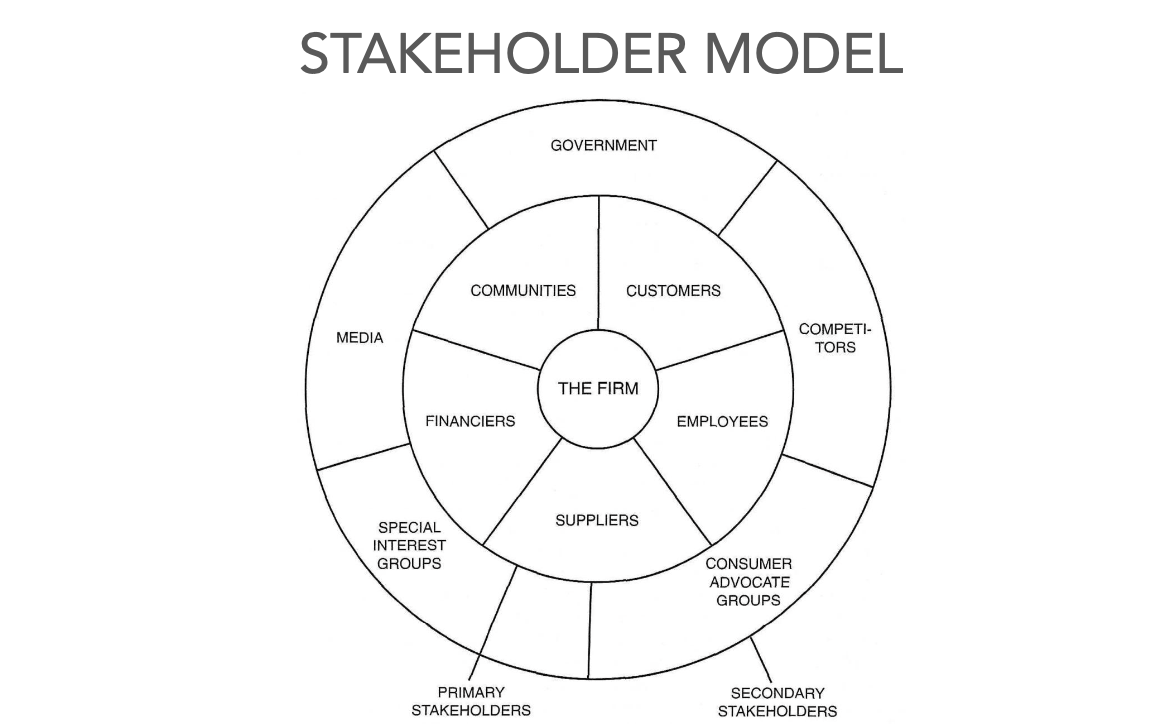
5 barriers to an ethical organization
Ill-conceived goals= We set goals and incentives to promote a desired
behavior, but they encourage a negative one.
Motivated blindness= we overlook unethical behavior of others when it’s in our interest to remain ignorant
Indirect blindness= we hold others less accountable for unethical behavior if it’s carried through third parties
The slippery slope= we are less able to see others’ unethical behavior when it develops gradually
Overvaluing outcomes= we give a pass to unethical behavior when the outcome is good
Four pillars of ethical culture
Explicit values= a well-crafted mission statement can anchor strategies and practices by clearly stating principles widely shared in the organization
thoughts during judgement= behavior tends to be guided by what comes to mind immediately before engaging in an action, and those thoughts can be meaningfully affected by context
Incentives= companies that offer pro-social incentives are likely to produce happier, more satisfied and more loyal employees. An ethical culture both does good and feels good
Cultural norms= to create more ethical norms, focus on “ethical beacons” in your organization": people who are putting the mission statement into exemplary practice
Remedies to Barries of an ethical organization
